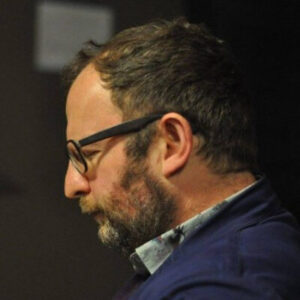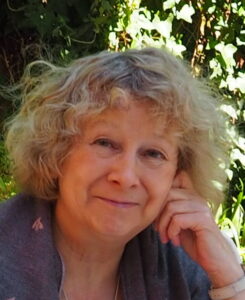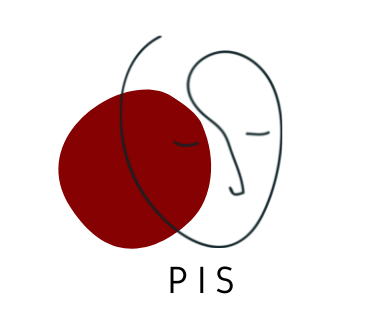The Monster
Charles Wolfe (Ghent University)
Anomalous Life in Early Modernity. The Naturalization of Monsters and their (residual) Messianic Power
Sala Seminari – 5 Marzo 2019, 14:30/16:30
Pierre-Olivier Dittmar (EHESS, Paris)
Il mostro come arma politica. Una di-mostrazione medievale
Sala Seminari – 2 Aprile 2019, 14:30/16.30
Christine Battersby (University of Warwick)
The Pregnant Grotesque. Contextualising the Portrayal of Pregnancy in Contemporary Sculpture
Sala Seminari – 28 Aprile 2019, 14:30/16:30
SEE BELOW:
Anomalous Life in Early Modernity.
The Naturalization of Monsters and their (residual) Messianic Power
Charles Wolfe (Ghent University, Ghent)

Abstract
“Ces noces contre nature qui sont la vraie Nature”
Deleuze & Guattari, 1980, p. 295
Long before Canguilhem’s essay on monstrosity and the monstrous (Canguilhem 1965/2008), writers such as Montaigne and Diderot observed the ‘destabilizing’ potential of monsters for our ideas of order, of Nature as something either benevolent and/or intelligible (Wolfe ed., 2005). As one eighteenth-century surgeon observed, they are the ‘place’ where Nature seems to go against Nature. This destabilizing potential could of course also be sacralized, with monsters serving as “portents”, “omens”, or anti-heroes – figures of a kind of sacred marginality (Wolfe 2008). But it ultimately gets subsumed in a process of naturalization, in which monsters become statistical “anomalie” to be understood in merely quantitative terms: this is Isidore Geoffroy Saint-Hilaire’s project for a positive teratology, in the first decades of the nineteenth century (Hagner 1999). My interest here is to return to this tension between a challenging or messianic potential of monsters, and a naturalistic, demystifying approach to their existence, to see if this is a satisfactory opposition, or if the naturalist can also appreciate the contra naturam potential of the monster. I suggest that the monster is a key figure (stand-in, harbinger, figurehead) of embodiment – of what is uniquely embodied and alive – which is why materialists such as Diderot were so fascinated with this figure (Wolfe 2012, Wolfe 2016).
Bio
Charles T. Wolfe (PhD, Boston University, 2007) is a Research Fellow in the Department of Philosophy and Moral Sciences and Sarton Centre for History of Science, Ghent University, and an associate member of the IHPST (CNRS-UMR 8590, Paris). He works primarily in history and philosophy of the early modern life sciences, with a particular interest in materialism and vitalism. He is the author of Materialism: A Historico-Philosophical Introduction (Springer, New York 2016), and has edited volumes including Monsters and Philosophy (College Publications, Londra 2005), The Body as Object and Instrument of Knowledge (Springer, New York 2010, with O. Gal), Vitalism and the scientific image in post-Enlightenment life-science (Springer, New York 2013, with S. Normandin), Brain Theory. Essays in Critical Neurophilosophy (Springer, New York 2014).
Mostri e altri animali.
Presentazione del numero 380/2018 della rivista
AUT-AUT
Massimo Filippi, Alessandro dal Lago, Benedetta Piazzesi ed Enrico Monacelli
Il mostro come arma politica.Una dimostrazione medievale
Pierre-Olivier Dittmar (EHESS, Paris)

Abstract
Durante tutto il periodo medievale, la questione del mostruoso è stata ampiamente affrontata in testi e immagini. In questo lungo periodo di tempo, il XIII secolo è stato un punto di svolta, da cui il mostro è stato considerato non tanto una meraviglia della natura quanto una deviazione, un difetto rispetto ad una norma. Da lì, gli usi morali del mostruoso si moltiplicano, mirando a costruire in negativo una nuova normatività dell’essere umano. È il caso in particolare delle storie di popoli mostruosi d’Oriente, che servono come base per un discorso maggioritario, xenofobo ed etnocentrico sui privilegi dell’Occidente: la mostruosità fisica di questi popoli è considerata come il riflesso della loro inadeguatezza morale. Ma la violenza di questo discorso maggioritario basato sull’omologia “essere/apparenza” non deve oscurare la presenza di voci alternative e contrapposte. Presenterò qui Mostri di uomini, il primo libro di mostri in francese di cui ho appena terminato la traduzione, un’opera sconosciuta, rivoluzionaria e oscena, in testo e immagine, che cerca proprio di rovinare la logica ordinaria delle apparenze. In una logica di dimostrazione, questo testo fa del mostro un’arma politica diretta contro l’Occidente, anche per poter sfidare i fondamenti antropologici di una società disuguale.
Bio
Pierre-Olivier Dittmar è maître de conférences all’EHESS di Parigi. Il suo lavoro si concentra sulle interfacce con i non-umani durante il Medioevo, siano essi animali, invisibili o artefatti. È co-autore di Image et transgression au Moyen Âge (PUF, Parigi 2008) e Le monde roman par delà le bien et le mal (2012). Ha curato Adam et l’astragale. Essais d’anthropologie et d’histoire sur les limites de l’humain (MSH, Parigi 2009) e recentemente Les images dans l’occident médiéval (Brepols, Turnhout 2015). È co-editore della rivista “Techniques & Culture” dal 2016 con Yann-Philippe Tastevin.
The Pregnant Grotesque. Contextualising the Portrayal of Pregnancy in Contemporary Sculpture
Christine Battersby (University of Warwick, Coventry)

Abstract
This talk will be an extended version of the article “Natality, Materiality, Maternity: The Sublime and the Grotesque in Contemporary Sculpture” [in Motherhood in Literature and Culture, eds Gill Rye et al, 2017] which was published in a very abbreviated form, and with web-links to only a few of the associated images. Both the talk and the article consider sculptures by recent contemporary male sculptors in relation to the question as to why their sculptures tend to trigger the response that they are “grotesque”, rather than “sublime”. In revisiting the talk for your seminar, I will abbreviate some of the historical background relating to the oppositional aesthetic categories of the beautiful and the sublime, in order to say more about the historically mobile and also under-theorised category of the “grotesque”. If time permits, I will also discuss the medical and religious traditions of depicting pregnancy through écorché figures, and add in some comments about the emergence of transgendered “male mothers” in real-life 21 st century societies.
Own website: https://bit.ly/3IAlXzz
Bio
Christine Battersby is a British philosopher and Reader Emerita in Philosophy at the University of Warwick. She was visiting Fleishhacker Chair of Philosophy at the University of San Francisco. Battersby is a Fellow of the Royal Society of Arts. She is known for her research on feminist aesthetics. Among her publications: The Sublime, Terror and Human Difference (Routledge, Londra 2007); The Phenomenal Woman: Feminist Metaphysics and the Patterns of Identity (Routledge, Londra 1998); Gender and Genius: Towards a Feminist Aesthetics (Indiana University Press, Bloomington 1990).
Suggested Reading:
C. Battersby, “Natality, Materiality, Maternity: The Sublime and the Grotesque in Contemporary
Sculpture”, in Motherhood in Literature and Culture: Interdisciplinary Perspectives from Europe, eds. G. Rye, V. Browne, et al., Routledge, New York 2017, pp. 70-82.
C. Battersby, Flesh Questions: Representational Strategies and the Cultures of Birth, in “Women: A Cultural Review”, 17 (3), 2006/7, pp. 290–309.
C. Battersby, The Sublime, Terror and Human Difference, Routledge, London & New York 2007.
R. Betterton, Maternal Bodies in the Visual Arts, Manchester University Press, Manchester 2014.
K. Clark, The Nude (1956), Middlesex: Penguin, Harmondsworth 1964.
F. S. Connelly, ed., Modern Art and the Grotesque, Cambridge University Press, 2003.
Cultures of Birth, Special Issue of Women: A Cultural Review, (Cultures of Birth ) 17 (3), 2006/7.
Feminist Review, 93 (1), 2009, Special issue on Birth.
Hypatia, 21 (1) 2006, Maternal Bodies Issue.
J. Jopling, Marc Quinn: Evolution, White Cube, London 2008.
Making Embryos Visible (Exhibition). Tatjana Buklijas and Nick Hopwood, Department of History
and Philosophy of Science, University of Cambridge, 2008 (with web updates 2010):
http://www.sites.hps.cam.ac.uk/visibleembryos/index.html
J. Palmer, The Placental Body in 4D: Everyday Practices of Non-Diagnostic Sonography, in “Feminist Review”, 93 (1), 2009, pp. 64 – 80.
M. Russo, The Female Grotesque: Risk, Excess and Modernity, Routledge, Abingdon & New York 1995.
Studies in the Maternal, http://www.mamsie.bbk.ac.uk/ (online, free access)
Entry for Thomas Beatie (The “Pregnant Man”), https://en.wikipedia.org/wiki/Thomas_Beatie
Website about Alison Lapper, http://www.alilapper.com/about
Website for Marc Quinn http://marcquinn.com/

